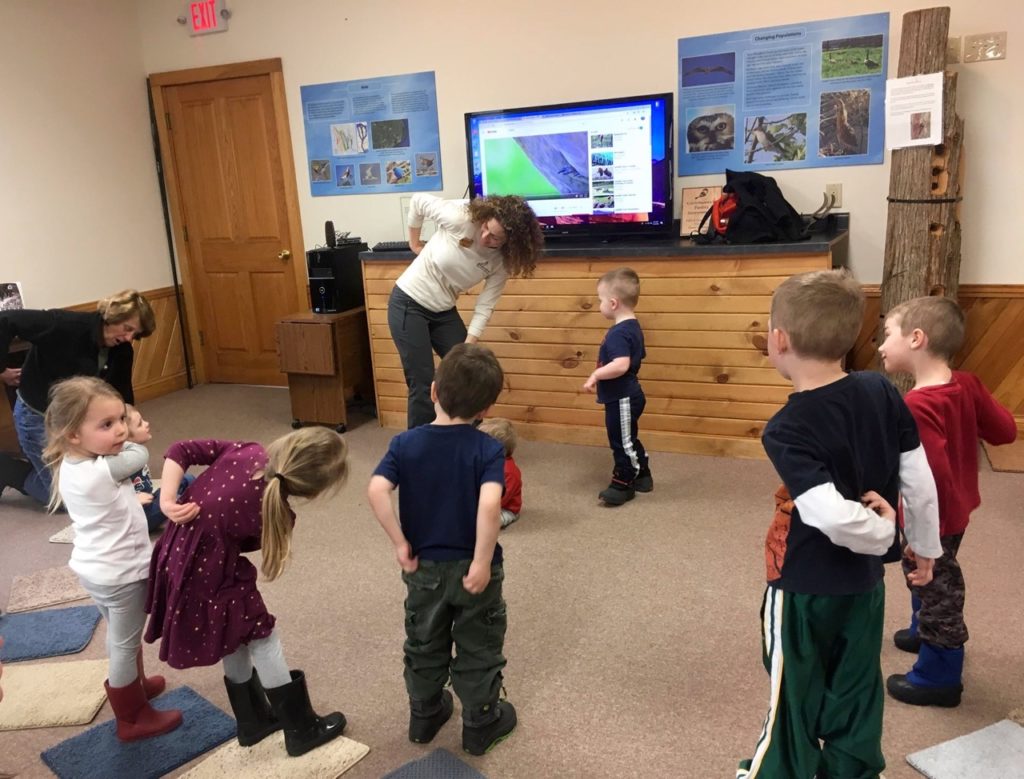Sandhill Cranes are among the largest birds in Wisconsin, but imagine just how enormous they must appear through the eyes of a young child. Cranes are intriguing to watch and even though they don’t speak English, we can learn a lot about their communication by observing them.
 Preschoolers preening like cranes
Preschoolers preening like cranes
This month’s Raising a Wild Child preschool group learned all about Sandhill Crane behavior. The topic was a natural fit for April because the cranes are back from their wintering grounds and are easily spotted in open fields and wetlands.
Each child, aged two up to five years old, sat on a carpet square, which served as their “nest.” Next, thanks to YouTube, the kids watched short video clips of Sandhill Cranes displaying common behaviors. We briefly discussed each behavior and then acted them out.
We started by talking about how cranes move from place to place. They fly of course! The kids were enthralled with a video of two cranes soaring in the sky and singing their loud, rattling call. The call is so loud, it can be hard up to 2.5 miles away! We “cranes” stretched our wings and our necks and flew around the room for a bit, until we were ready to go back to our nests.
Next we learned about what Sandhills eat and how they groom their feathers. Cranes are omnivorous and use their long bill to probe the ground for seeds, tubers and fruits as well as small mammals, amphibians, insects and worms. The kids flew over to the field (open area in the room) and used their hand as a crane head. We walked around the field, eating mice, seeds and one girl exclaimed, “I just ate a salamander!” Once our bellies were full, we preened our feathers, using our hand as a beak to pick parasites off our backs and wings.
I think the kids most enjoyed learning about how cranes dance. They giggled when they watched a video of two cranes jumping, twirling and bobbing their heads. This display is part of the cranes’ courtship ritual, perhaps similar to human courtship! The kids flew to the field and wiggled, twirled and jumped up and down.
Many of the preschoolers also liked acting out how cranes defend their territory. They watched a clip showing a crane ruffling its feathers to an intruder, then the crane jumped up high and kicked its legs forward in powerful moved called a jump-rake. We flew over to the field and spread out so everyone had enough space. One of the parents pretended to be fox trying to steal eggs from our nests. We ruffled our wings at the fox as a warning, but she didn’t go away. Finally, we all jumped and kicked our legs out and the fox scurried off. Hooray!
By imitating the behavior of wild birds we hope to help children imagine what they are thinking, and in doing so learn to appreciate just how interesting they really are.
Photo by Brianna Trainor, showimg kids’ “preening” their imaginary feathers
